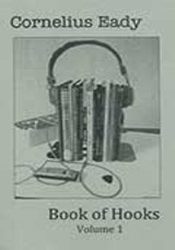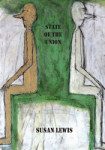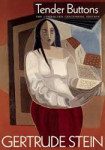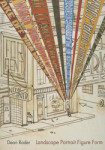
My spirits sparkle because, leading with chapbooks from Cornelius Eady, I also promote CD’s that are among the finest performances I’ve heard in years
Book of Hooks, Volume One and Volume Two are proof that Eady is an accomplished poet/guitarist who makes multi-instrumental music that enhances the poems, never overwhelming them. Like the poems, the wordless riffs stand alone. “The Old Married Couple,” is more complex than it appears, just like everything else in these collections:
The old married couple
Was sitting out on the stoop.
Above their heads the ozone hole,
The stars arced bright,
Indifferent loops.
She gave him a kiss,
A tiny headline
The news was sure to miss.
A quiet moment in the scuffle.
Just an old married couple.
This is the way the real life goes
A coffee cup, a mailbox filled with bills.
This is real life, heaven knows,
Holes in your socks, and a
Secret war of wills.
He gave her a kiss
For all the other times he knew he’d surely miss
Coming up in the struggle
Just an old married couple.
The old married couple
Was dreaming in their bed.
Their bodies contradicting
All the angry words they’ve said.
Their bodies spooned into a kiss.
A small detail the untrained eye would miss.
A confession under covers
Just an old married couple.
Eady is skilled at homage, though in the strongest in both volumes, the term should be “femmage,” probably coined by art historian Josephine Withers. His tribute to the trailblazing Edna Saint Vincent Millay touches themes she knew well:
The Latin’s vulgar, but the advice is sound.
Youth have no pity; leave no farthing here
For age to invest is compromise and fear.
These are the last lines , and like Millay, they are unflinching. Using “farthing” Eady displays an antiquated noun they both used with timeless magic. “Your Freedom, ” in Volume Two, was composed for Adrienne Rich. That Eady chose to include it here speaks volumes about his generosity because it was composed by his friend Mary Molyneux:
Your Freedom is on-going.
It is material and moving.
Like a spirit captured in a Lucite cube
It is a weight that oppresses
Nothing.
The placement of “Nothing,” solitary, yet connected to the rest, is an example of another writer, getting it right. This quote is part of a first-rate whole.
***
 Susan Lewis, in State of the Union is a serious punster with “Meat Me” and other poems that are kineticly, impressively compressive. It, and its companions, are memorable talismans:
Susan Lewis, in State of the Union is a serious punster with “Meat Me” and other poems that are kineticly, impressively compressive. It, and its companions, are memorable talismans:
In the flesh & other fancies of emergence. Or sweeten
the bitter pill until it bleeds. Begging for an end to
the clamorous color. Begging for order.
This fragment is compassionate fun, with a pliant, sturdy undergirding, and this can be said of everything here. The influence of Gertrude Gertrude Stein’s Tender Buttons is judiciously apparent. Tender Buttons was recently reissued by City Lights Books, to mark the centennial of a volume that broke language barriers, acknowledging hungers to see more. It challenged with inspired daring.
 “Melting and not minding, safety and powder, a particular recollection and a sincere solitude all this makes shunning so thorough and so unrepeated and surely if there is anything left it is a bone. It is not solitary,” Stein says this in Tender Buttons as a reminder that this kind of language makes us less solitary. If this and other passages are rough going for some, the note on the text by Seth Perlow, and Juliana Spahr’s afterword will help.
“Melting and not minding, safety and powder, a particular recollection and a sincere solitude all this makes shunning so thorough and so unrepeated and surely if there is anything left it is a bone. It is not solitary,” Stein says this in Tender Buttons as a reminder that this kind of language makes us less solitary. If this and other passages are rough going for some, the note on the text by Seth Perlow, and Juliana Spahr’s afterword will help.
***
Dean Rader won the T. S. Eliot Poetry Prize for Works and Days, a full-length collection. His Oklahoma-bred eye is wide and his colorings shimmer. As a title, Landscape Portrait Figure Form gives this chapbook a well met, multi-dimensional implication. Think of many of his poems as theatre sets that go deep, with shadings and surprises that make the senses tingle:

Instead of the endless exercise
of the sketch, instead of the trace.
Instead of mimicking Manet from
memory, instead of absinthe and
afterglow. Instead of the screaming skull.
Instead of . Ask, he does of tenor
and timbre for the hand to unbutton
color’s blouse. Instead of blouse.
He finds he knows shapes the way the sea
Knows its waves: the thing it flows
in and out of. He sees crimson so clearly he
becomes crimson, black with such
clarity he turns blind. Instead of image.
Over and over he rides the color wheel
deep into his mind’s night, hoping to arrive
at the right shape. When he closes his
eyes he tries to want what the colors want:
the agony of onyx, the sorrow of burlywood,
the obsessions of oxblood. Over and over he
asks of the colors to find their form.
Instead of folding into augur. What the mind
never stops seeing: sienna as square,
terre verte as rhombus, cyan circle as the viridian
light of digon. The azure arbelos. As
though his own, he accepts triangle’s sharp sin,
he takes on the salvation of the little
oval. Instead of triquetra. Instead of annulus.
Instead of plane or line, he requests
Pattern, but structures hide behind the colors
that are not theirs. Harder than
lifting the waves from the seas themselves
He sees the seas so clearly but
is neither ocean nor its waves.
Not even red becomes red.
Of the form it must figure, the body asks.
Let coral cylinders be the angel’s
rib cage, ochre lune the sun and its shadow
self, a black and white encircle this
city, and its roads, that instead of gushing
us out, draw us in.
This, “Becoming Klee, Becoming Color,” is masterful, and if we do it justice, allowing it to draw us in, we will do better by ourselves.
Chapbooks, with their small size, do best when treated like portable gems. Every chapbook mentioned here is just that. Their publishers deserve hearty hosannas for producing new work, and in the case of City Lights Books, for bringing a new generation to an often under-appreciated classic.




